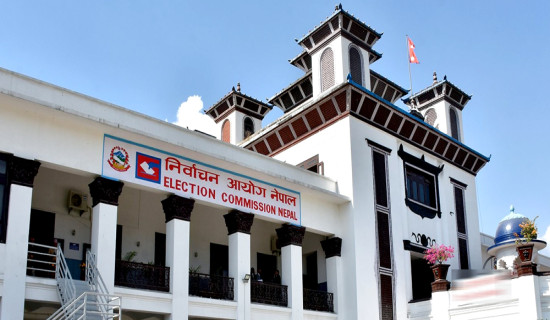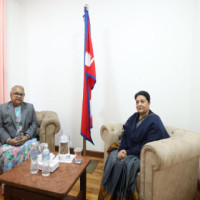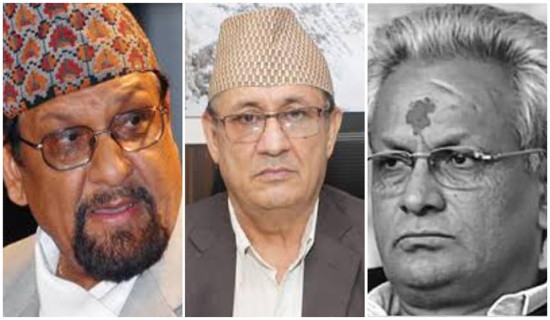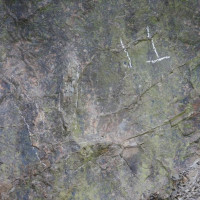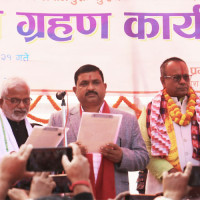- Monday, 8 December 2025
Global solidarity essential to tame rising temperature
Kathmandu, Nov. 13: Global leaders, diplomats, climate change experts and youth activists are now gathered at the 27th United Nations Climate Change Conference (COP27) in Sharm el-Sheikh, Egypt. They are lobbying for keeping the global average temperature rise below 1.5 degrees Celsius by the end of this century. But experts are concerned about limiting global temperature to 1.5 degrees Celsius at a time the earth is recording its hottest temperature every passing year.
A recent report released by the World Meteorological Organization (WMO) said that the past eight years have been the hottest in recorded history. The global average temperature in 2022 is said to be about 1.15 degrees Celsius above the pre-industrial level. Extreme heatwaves, drought and devastating flooding have affected millions and cost billions this year, the WMO’s provisional State of the Global Climate in 2022 report stated.
“The greater the warming, the worse the impacts. We have such high levels of carbon dioxide in the atmosphere now that the lower than 1.5 degrees Celsius of the Paris Agreement is barely within reach,” said WMO Secretary-General Prof. Petteri Taalas.
The Intergovernmental Panel on Climate Change (IPCC) Chair Hoesung Lee also said during the COP27 inauguration session that the world is not on track today to limit global warming to 1.5 degrees Celsius.
Why limiting global temperature is important for Nepal?
Due to the fragile landscape, Nepal is already affected by global warming and extreme events like landslides, floods, and changes in the rainfall pattern and melting of the glaciers have already been witnessed.
According to Dr. Rijan Bhakta Kayastha, Professor of Glaciology at Kathmandu University, limiting global temperature rise to 1.5 degrees Celsius has been a major issue at the international level and even if the global temperature rise is limited to this, the temperature in Nepal will be higher than the global average. “Even now, the temperature rise in Nepal is measured to be higher than in the other developed countries.
With temperature rise in the mountain, glaciers are narrowing and new glacier lakes are forming or the existing ones are expanding,” he said.
The expansion of glacier lakes might cause disaster in the coming days. The place where there used to occur snowfall is receiving rainfall now. As a result, there will be no recharge of water in the mountains because the rainfall flows directly downwards. That could cause a shortage of water, which will affect the ecosystem and agriculture production, Dr. Kayastha said.
Dr. Sudeep Thakuri, climate scientist and Associate Professor at the Central Department of Environment Science, Tribhuvan University, said that seeing the global trend, limiting global temperature rise by 1.5 degrees Celsius is next to impossible. In the context of mountainous countries like Nepal, high altitudes are found warmer compared to the lower altitude.
Research conducted by Dr. Thakuri and his team titled “Elevation-dependent warming of maximum air temperature in Nepal during 1976–2015” found that on average and across the entire country, maximum air temperature increased more than the minimum temperature during this period and, as a consequence, diurnal temperature range (DTR) also increased significantly. Maximum temperature increases have been observed during all seasons of the year.
The research pointed out that the asymmetric warming pattern could have more serious impacts in Nepal than in other regions of the world, considering the consequences of associated warm maximum-temperature extremes (heatwaves, hot days) on human life, increased primary production, and modifications in the hydrological cycle, Dr. Thakuri said.
Meanwhile, the data maintained by the Department of Hydrology and Meteorology (DoHM) shows that the maximum temperature of Nepal has risen by 2.5°C over the past 40 years, and the average annual maximum temperature of the country has risen by 0.056°C, with greater warming at higher altitudes.
What can we do?
Dr. Kayastha said that there should be efforts to minimize CO2. “We alone cannot do anything, the global community should join hands to minimize the CO2 emissions to limit the global temperature rise.”
The only task we can do is to make a dam on run-of-the-river, (river water uses for hydroelectricity production), which also helps to recharge the ground, he said. “We need international funds to mitigate and adapt to the impact of climate change,” he said.
According to Dr. Thakuri, we need to do everything possible to mitigate the impact of climate change by promoting electric vehicles and the use of alternative energy. “But we are not in an appropriate state to mitigate the impact, so adaptation is the only way to curb the climate change impact for now.”
At COP15 in Copenhagen in 2009, developed countries committed raising USD 100 billion per year by 2020 to assist developing countries in dealing with the effects of climate change but that commitment is yet to be implemented. “Climate finance is a must to the countries like ours to fight the challenges. That should be directly mobilised to the affected communities, he said.
What world leaders said in COP27?
Keeping global temperature rises below 1.5 degrees Celsius is still possible but will require private sector funding, top climate diplomat for the U.S. John Kerry said in his address at COP27.
About 1.6 billion people now live in climate change "vulnerability hotspots", a number that could double by 2050 if fossil fuels continue being used at the current rate, scientists warned at the COP27 U.N. climate talks in Egypt.
“It’s already too late for many glaciers and the melting will continue for hundreds, if not thousands of years, with major implications for water security. The rate of sea level rise has doubled in the past 30 years. Although we still measure this in terms of millimetres per year, it adds up to half to one metre per century and that is a long-term and major threat to many millions of coastal dwellers and low-lying states,” WMO Secretary-General Prof. Petteri Taalas said.
At COP26, in November 2021, all the signatory countries outlined more ambitious emissions reduction pledges, called Nationally Determined Contributions (NDCs), to control global warming. Even if the pledges are met, it's likely temperatures will rise by about 1.8 degrees Celsius by the end of the century, said Senior Research Scientist Haewon McJeon and his team last year. However, only 31 countries submitted their NDCs at UNFCCC, Nepal being one of them.
Economic and non-economic losses have already been witnessed in Nepal. This year, the government and non-government panels attending COP27 are lobbying for Climate Finance to address the loss and damage in Nepal. Loss and damage and mountain issues are among the eight thematic areas the country is making deliberation at the conference.
Leaders say that to address the economic loss due to climate change, Nepal needs climate funds as grants not as loans as the country has very negligible contribution to CO2 emission. This year government and non-government organisations from developing countries are pushing for climate funds to address loss and damage, which more fossil fuel emitters are responsible for.
Manjeet Dhakal, climate change activist and advisor to the LDC chair UNFCCC, who is attending the COP27, twitted, “Limiting global warming to 1.5 degrees Celsius is the best option to reduce future loss and damage, but as we cannot eliminate all of it, here at COP27, we must establish the funding arrangement responding to loss and damage.”



